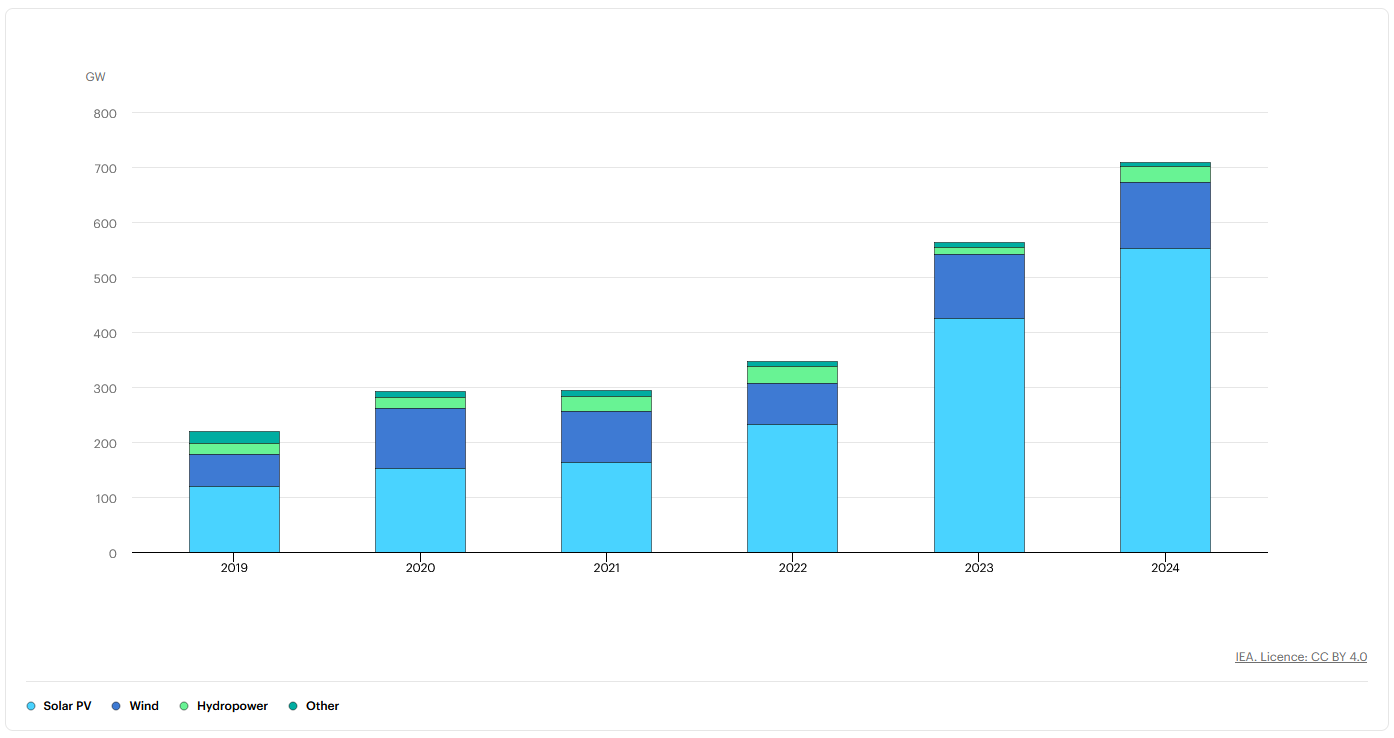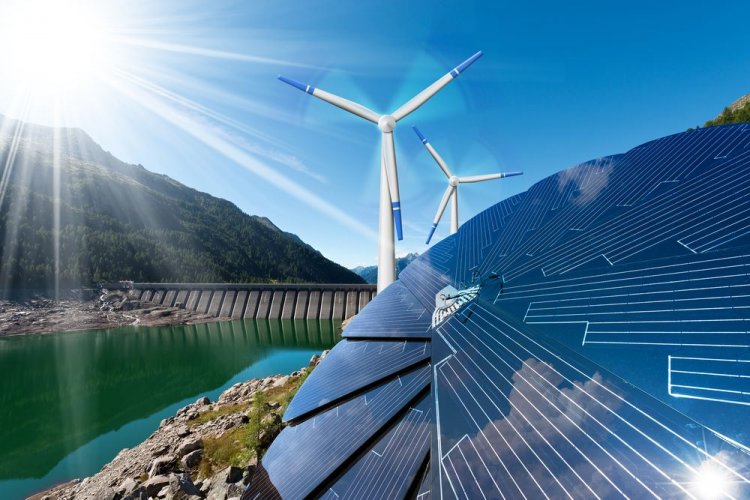Last year, renewable energy sources (RES) and nuclear power together accounted for 40% of global electricity production and 80% of global generation growth for the first time.
Such data was published by the International Energy Agency (IEA) in its report “Global Energy Outlook 2025”.
EcoPolitic will tell you about the interesting trends that the researchers have identified.
Renewables continue to gain momentum
New renewable energy installations have reached record levels for the 22nd year in a row: in 2024, about 700 GW of total renewable energy capacity was added, almost 80% of which were solar power plants (SPPs).
Total increase in RES capacity by technology, 2019-2024.

Source: iea.org.
Solar and wind energy production increased by a record 670 TWh, while electricity production from natural gas increased by 170 TWh and from coal by 90 TWh.
Last year, renewables accounted for 32% of global electricity production. In the European Union, the share of generation from solar PV and wind exceeded the combined share of coal and gas for the first time. In the United States, the share of solar and wind energy increased to 16% and exceeded the share of coal. In China, solar and wind power together accounted for almost 20% of total generation.
Nuclear power is also on the rise
In 2024, more than 7 GW of nuclear power capacity was commissioned, which is 33% more than in 2023. The volume of new capacity added in this sector was the fifth highest in the last three decades. Electricity production at nuclear power plants increased by 100 TWh in 2024. This equals the largest increase in this century, if we do not take into account the post-covid rise. In 2024, the number of nuclear power plants under construction increased by 50%.
The growth rate of CO2 emissions has slowed down
The increase in carbon dioxide (CO2) emissions from the energy sector continues to lag behind the growth of the global economy. In 2024, emissions growth slowed to 0.8%, while the global economy grew by more than 3%.
The global increase in CO2 emissions by 300 million tons was driven by record high temperatures. If the weather in 2024 had remained the same as in 2023, which was the second hottest year on record, about half of the increase in global emissions could have been avoided.
However, the researchers note that the deployment of solar, wind, nuclear power plants, electric vehicles, and heat pumps since 2019 has prevented 2.6 billion tons of CO2 emissions annually, equivalent to 7% of global emissions.
The largest increase in emissions in 2024 came from transition and developing countries outside of China. China's emissions growth slowed in 2024, although per capita emissions are now 16% higher than in developed countries and almost double the global average.
Emissions in developed countries decreased by 1.1% to 10.9 billion tons in 2024, a level seen 50 years ago when their GDP was more than three times smaller.
As EcoPolitic previously reported, according to IEA experts, renewables and nuclear power will be able to cover the increase in global electricity demand.





